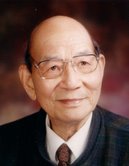 It is a time honored practice to display rocks in outdoor gardens or indoors on pedestals for appreciation. The great calligrapher and painter Mi Fu loved rocks to distraction. Bowing to them nearly everywhere he encountered them, he became known as ‘Mi the Eccentric’. The famous poet Su Shi had a passion for rocks as well and composed many beautiful verses about them:
It is a time honored practice to display rocks in outdoor gardens or indoors on pedestals for appreciation. The great calligrapher and painter Mi Fu loved rocks to distraction. Bowing to them nearly everywhere he encountered them, he became known as ‘Mi the Eccentric’. The famous poet Su Shi had a passion for rocks as well and composed many beautiful verses about them:
“I returned, carrying this rock with me,
So the Eastern Sea was cradled in my sleeves.”
“The clouds and smoke beyond three mountain peaks
Could all be viewed in a fistful of Ningxian rock.”
These examples attest to the long history of rock appreciation.
Gongshi are selected for their unusual and beautiful shape, good color, and material. Of prime importance are features such as holes (tou), channels (lou), thinness (shou) and wrinkles (zhou) as well as their natural forms. Displayed on plates, basins, pedestals or stands, these rocks, with minor carving, reveal themselves as works of art full of majestic grandeur and refined elegance.
An exquisite rock is a painting by divine hands, a carving made by the gods, with a hundred linked holes, offering a wealth of joy and amusement . Perfect specimens are rarely found and an amateur collector can scarcely dream of obtaining one! Even if you are fortunate enough to own one, it often appears inadequate for a full expression of your artistic conception. One solution is to group rocks together, highlighting their individual merits while avoiding their flaws. Four or five of them of different heights arranged as an ensemble with some miniature trees creates a natural landscape within a limited space, a refreshing artistic conception that suggests the beauty of winding mountains.
Select rocks with similar material and texture for the ensemble. Keep them detached from one another, each with a separate pedestal, so that they can be easily placed and re-arranged on a desk to accommodate changing artistic ideas. I offer a few illustrations of my own groupings for the comments and appreciation of rock lovers.
(This article was privately printed in China before the author’s passing in 1996. We are grateful to Mr. Fang Yingjiu for bringing it to our attention)
Hu Zhaokang (1918 – 1996) is a connoisseur of Chinese antiques and gongshi.
This Essay was written for Kemin Hu?s book The Spirit of Gongshi: Chinese Scholar?s Rocks